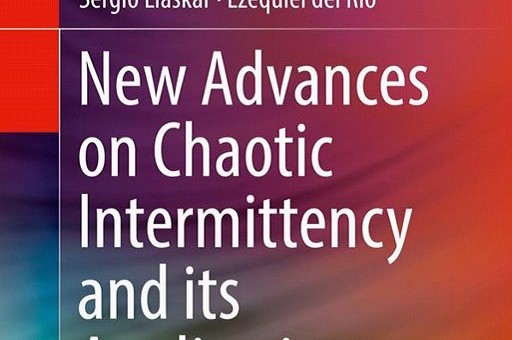For readers interested in books in the area of deterministic chaos and non-linear dynamics of complex systems, we recommend the book New advances on chaotic intermittency and its applications by Sergio Elaskar and Ezequiel del Río.
Dr. Sergio Elaskar, is a professor working at the National University of Cordoba, Argentina. He is an aviation mechanical engineer and doctor of technical sciences (National University of Córdoba). He conducts research and didactic classes in the area of gas dynamics, fluid dynamics, nonlinear dynamics and chaos, magnetohydrodynamics. He is the author of many significant and cited publications in the field of nonlinear dynamics.
Dr. Ezequiel del Rio works at the Faculty of Applied Physics of the Universidad Politécnica in Madrica. His main area of research interests are: nonlinear dynamics, chaos, fractals, stochastic dynamics, artificial neural networks, bio-inspired robotics and devices.
When I was asked to review this book, I expected that a lot has been said and a lot of new issues can be added. In fact, the case of the present book confirmed to me, that in this field we have a lot of interesting achievements, obtained also thanks to the work of these two authors. In this book, we have a full and comprehensive study about the history and present of dynamical transitions between chaotic and stable states in complex systems. Intermittency itself is a very surprising and enigmatic phenomenon that not only made a change in our perception of reality but also forced us to change our imagination about the physics of many systems. A lot of work has been done in this field, but new investigations are still in progress giving valuable achievements that are shown to the reader. The phenomenon of intermittency was for the first time discovered by Lorenz. Shortly, it can be described by signals that have alternated regular or laminar phases with parts that have irregular bursts. There are many different types of intermittency occurring in low-dimensional dynamical systems. Intermittency was observed in many systems, natural and artificial, including simple cases like logistic maps and electrical circuits. In the classical theory of intermittency, we have I, II and III types (categories), where control parameters with their critical values play an important role.
Special attention is paid to new methodologies to investigate the reinjection probability density.
In Chapter 1, the concept of intermittency is introduced by means of a classical approach. However, the theory of intermittency is still developed giving us some other types. Chapter 2 is devoted to the presentation of recent advances – we have: type V, type X, on-off, eyelet, spatio-temporal, crisis-induced, structure and two-dimensional. Each type is shortly described with mathematical analysis and examples. This Chapter gives also interesting examples of intermittency in electrical circuits.
When intermittency was discovered it was considered an interesting phenomenon without possible practical applications. However, it turned soon out that in engineering, physics, nanoscience, medicine and economics there are possible applications. These are discussed in Chapter 3. Chapter 4 shows what happens when systems with intermittency are influenced by noise. Chapters 5, 6, 7 are devoted to the study of the influence of noise on statistical properties of intermittency. Some applications are considered.
Usually, intermittency is defined as a route to deterministic chaos. The sensitivity to initial conditions results in the fact that a small change of control parameters can lead to sudden changes with appearance of strange attractors. The reinjection probability density function is a measure, defined by the nonlinear dynamics of the system, that describes the reinjection mechanism, which maps back from the chaotic zones into laminar ones. The determination of the reinjection probability density is a key point in the characterization of intermittency. This function can be even discontinuous; such a case is a nonlinear Schrödinger equation that is presented in details in Chapter 8. This seems to be one of the most surprising parts in the book giving a lot of details about recent achievements on the statistical properties of type-I intermittency. In the case of type-II intermittency, a better approach is given by the Perron-Frobenius operator. Chapter 9 presents some further applications.
The whole book is very interesting. It can be recommended to people who are just beginning their experience with intermittency: students, lecturers, PhD candidates. It should serve as a key source of references to literature for those, who wish to explore the subject of complex systems and dynamical phenomena at the edge of chaos and determinism.
A review of this book can be found on:
https://zbmath.org/?q=an:06676691
or in attached pdf file.








